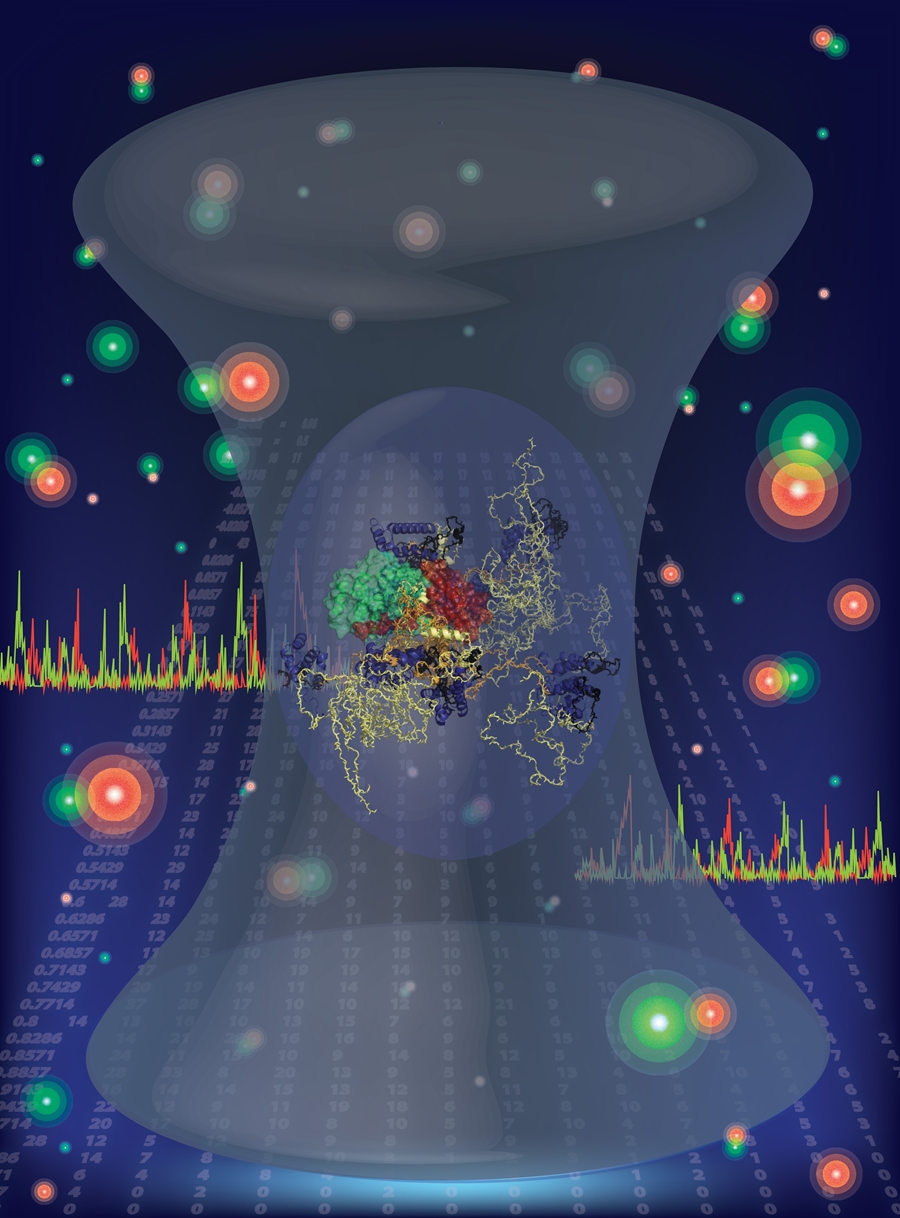
FAYETTEVILLE, Ark. – Research at the University of Arkansas shows that a plant protein’s dynamic structure plays a critical role in how the plant builds up its photosynthetic machinery, potentially informing the design of artificial solar energy conversion devices.
The interdisciplinary team described its findings in the September issue of Biophysical Journal, which featured on its cover an illustration of the research created by the study’s first author and U of A graduate student Rory Henderson.
The protein known as cpSRP54 is a component of the signal recognition particle in chloroplasts. It works like a cellular cargo ship to bind and carry newly made photosynthetic proteins to thylakoid membranes. Once delivered, the protein cargo assembles with chlorophyll in the thylakoid and begins capturing light energy that is converted to chemical energy.
By observing the different shapes of cpSRP54 in this study, the authors were able to understand how its structural features are used to bind and direct protein cargo to cellular sites that support assembly of the protein cargo into biological light-capturing devices.
Plants are much more efficient at converting light into usable energy than current man-made solar cells. That’s why the U.S. Department of Energy, which funded the research, is interested in finding out how to make solar cells that act more like plant cells, said Suresh Thallapuranam, a professor of biochemistry who was part of the research team.
The results were obtained through a collaborative effort with Colin Heyes, associate professor of physical chemistry; Ralph Henry, Distinguished Professor of biological sciences; Robyn Goforth, research assistant professor of biological sciences; Feng Gao and Srinivas Jayanthi, both postdoctoral research associates in the Department of Chemistry and Biochemistry; Alicia Kight, a research associate in the Department of Biological Sciences; and Priyanka Sharma, a doctoral student in the U of A’s cell and molecular biology program.
Henderson performed computational research on supercomputers at the Arkansas High Performance Computing Center, which was supported by several experimental approaches across chemistry, biology and physics. The National Science Foundation, National Institutes of Health and the Arkansas Biosciences Institute also partially funded the research.
Topics
Contacts
Suresh Thallapuranam, professor
Department of Chemistry and Biochemistry
479-575-5646, sthalla@uark.ed
Chris Branam, research communications writer/editor
University Relations
479-575-4737, cwbranam@uark.edu